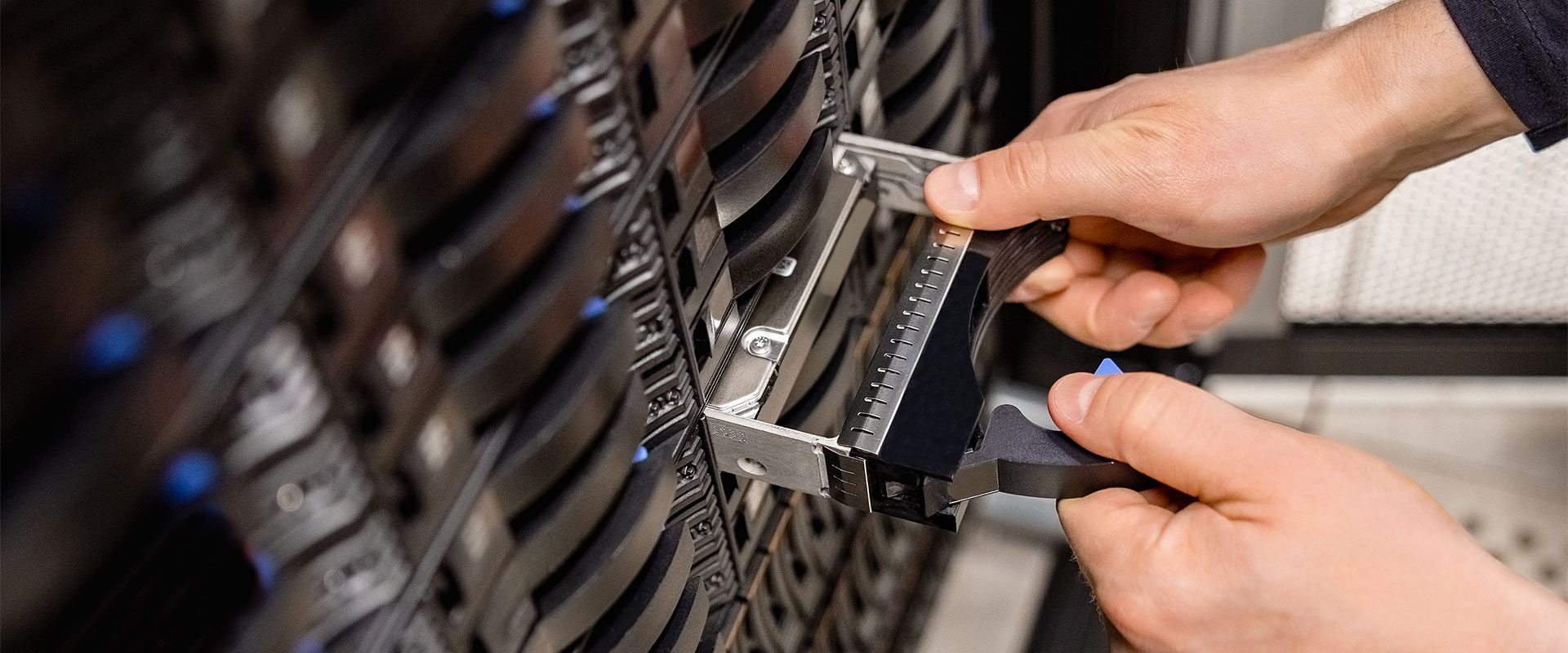We all have limited time to study long and complicated information about RAID theories, but you may be interested as to how RAID 5 works. We made it simple for you by providing the shortest and easiest explanation ever.
RAID 5 – how it works?
First we need to remind you XOR definition:
XOR function result is equal 1 if both arguments are different.
XOR (0, 1) = 1
XOR (1, 0) = 1
XOR function output is equal 0 if both arguments are same.
XOR (0, 0) = 0
XOR (1, 1) = 0
Now let us assume we have 3 drives with the following bits:
| 101 | 010 | 011 |
And we calculate XOR of those data and place it on 4th drive
XOR (101, 010, 011) = 100 (XOR (101,010) = 111 and then XOR (111, 011) = 100
So the data on the four drives looks like this below:
| 101 | 010 | 011 | 100 |
Now let’s see how the XOR MAGIC works. Let’s assume the second drive has failed. When we calculate XOR all the remaining data will be present from the missing drive.
| 101 | 010 | 011 | 100 |
XOR (101, 011, 100) = 010
You can check the missing other drives and XOR of the remaining data will always give you exactly the data of your missing drive.
| 101 | 010 | 011 | 100 |
XOR (101, 010, 100) = 011
What works for 3 bits and 4 drives only, works for any number of bits and any number of drives. Real RAID 5 has the most common stripe size of 64k (65536 * 8 = 524288 bits )
So the real XOR engine only needs to deal with 524288 bits and not 3 bits as in our exercise. This is why the RAID 5 needs a very efficient XOR engine in order to calculate it fast.
So when adding one drive for parity you will be able to rebuild the missing data in case of any drive failure.
In our example we have explained RAID 4 where parity is on a dedicated drive. RAID 5 will distribute parities evenly between all drives. Distributed parity provides a slight increase in performance but the XOR magic is the same.
To learn more about RAID 5 please go to Wikipedia article.
RAID – The Series. Check out:
RAID Calculator
We know that your data is priceless – calculate how many disks you need to get it safe!






37 Comments
pAT /
24, 10 2017 03:03:05THANKS SO MUCH! GOD BLESS YOU!
Eitan Lindenberg /
01, 07 2019 07:05:32As someone who is still learning about how RAID works, this explanation made it very clear. Thank you!
Aasim /
14, 01 2021 08:12:06I actually came here to understand how RAID 5 single write and restore in case of single disk failure works. But the explanation is for RAID 4 where a disk is dedicated for parity. I don’t understand the benifit of distributing parity across the disks in RAID 5. Could you explain it?
Thanks
Chris /
01, 11 2021 11:04:47Wow. Turns out I’m not too dumb to understand how RAID 5 works. I just never had the right teacher until now.